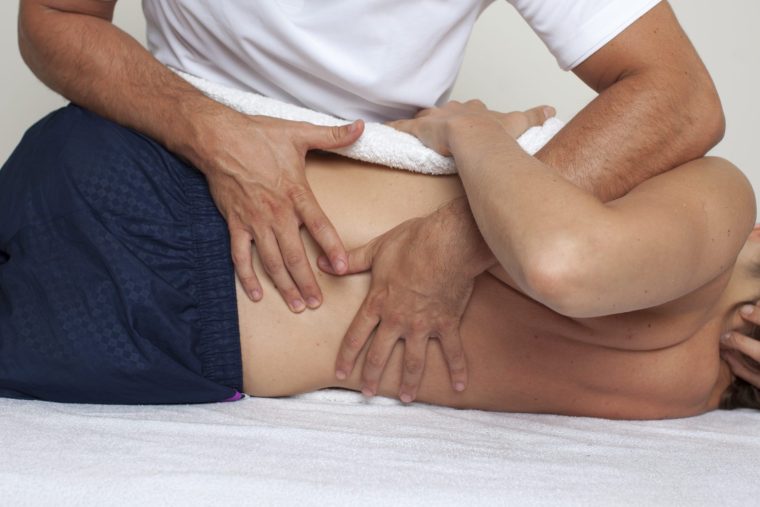The situation is real, a worldwide pandemic, and as we currently stand the chance of a vaccine for Covid-19 may be 12 to 18 months away. Currently, the recommendations from the World Health Organization to help reduce the spread and ‘flatten the curve’ include:
- Wash your hands frequently
- Maintain Social distancing
- Avoid touching, eyes, nose, mouth
- Practice respiratory hygiene – sneezing into your elbow
- If you suspect symptoms stay at home. If your symptoms become moderate to severe seek medical help. (WHO, 2020)
What might this mean for orthodox MSK physiotherapy practices?
Given that orthodox musculoskeletal (MSK) physiotherapy practice has been underpinned by treatments that involve contact with the hands, such as massage and manual therapies (Nicholls, 2018), and that modern practices include appointment structures between 20-30 minutes, the volume of patients coming through physiotherapy practice doors could be up to 16 a day. Consider a busy practice with 5 physiotherapists and that number increases to 80 patients a day. How often, do we implicitly touch our face in any context? Essentially orthodox MSK physiotherapy violates current WHO recommendations.
What lies beyond a public health crisis for MSK physiotherapy?
Whilst I support and praise the work that MSK physiotherapists do in this setting and have no doubt that they follow excellent hygiene practices, my thoughts head towards a variety of possible avenues around it’s relevance during public health crises.
- The impact of a communicable disease such as Covid-19 on traditional “hands on” practices? How will the public react? What affect will the pandemic have on public perceptions about hands on practices? What can physiotherapy offer as an alternative?
- Will we see the true effectiveness of hands on practices such as manual therapy and massage compared to other non-hands on approaches in the management of MSK conditions? By reducing hands on treatments will we see what the true value is in this practice? If there is a reduction in hands on practice, will this make way for physiotherapists to show their diverse skills in health promotion?
- How creative are physiotherapists in terms of alternative approaches to practice? Can they think outside the box where traditionally they have relied so heavily on their hands? What other practices apart from education and exercise do they have in their repertoire? How might physiotherapists engage in public health initiatives to enhance well-being?
- How will the profession change for the future? Is this an opportunity for the profession to expand into socially acceptable practices? Do we move away from traditional philosophies of body-as-machine and embrace social practices that form the philosophy of person centered care (autonomy, self-determination, shared-decision making for example)? Do we change the set up of our practice rooms (the traditional physiotherapy couch with its mechanical parts and vinyl cover conveys a paternalistic message of the therapist treating the person)? Do we merge with other professions such as OT and embrace a more humanistic approach to care?
Of course, we could all just wait for a vaccine, be closed-minded and continue on our traditional trajectory.
I appreciate I may be criticized for the timing of this blog as this is a time where physiotherapists will be looking to offer wider support to frontline healthcare. Yet, it may also offer a period of reflection to reconfigure how MSK physiotherapy could evolve it’s practice to consider:
What relevance does MSK physiotherapy have in times of public health crisis?
Thanks for having a read
TNP
References
https://www.who.int/emergencies/diseases/novel-coronavirus-2019/advice-for-public
Nicholls, David A. (2018). The End of Physiotherapy. Routledge advances in health and social policy. Abingdon, Oxon.


Leave a comment